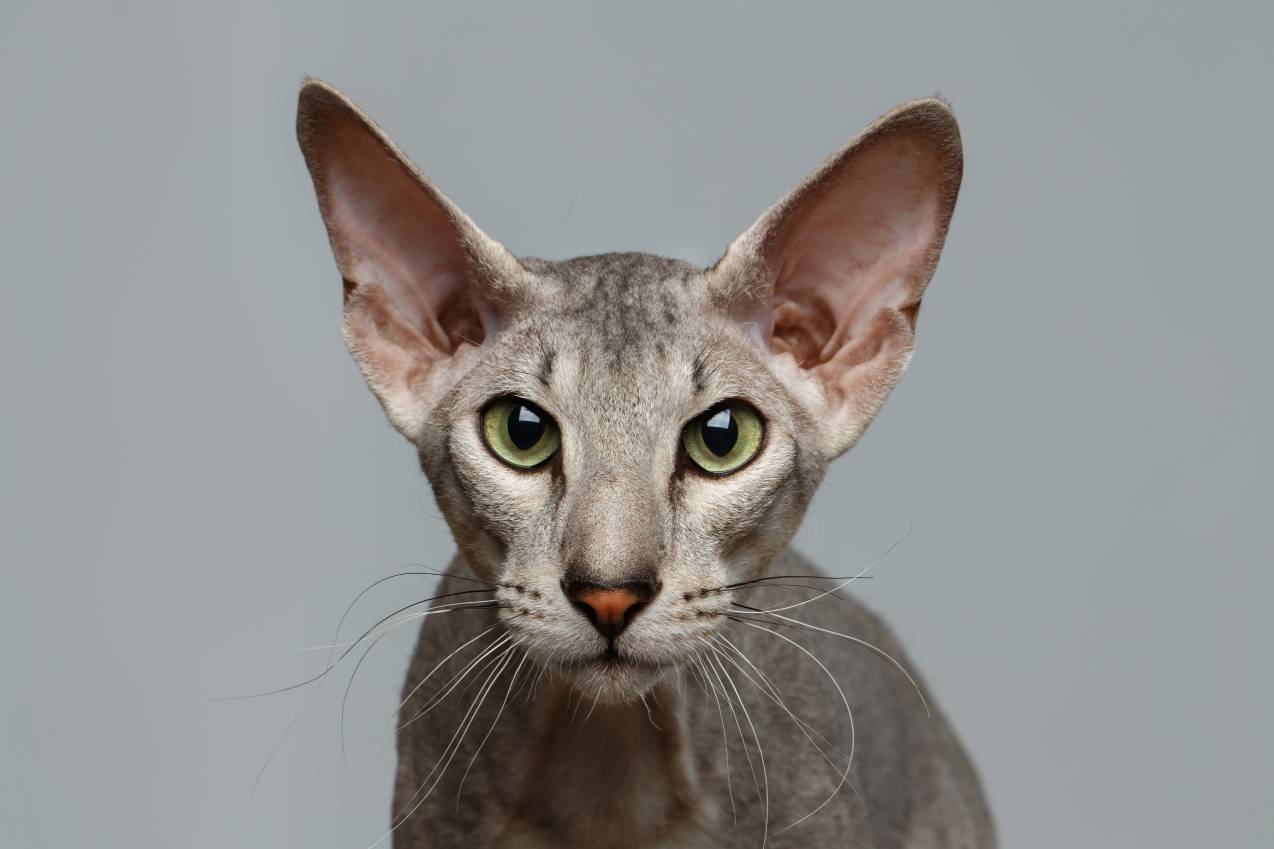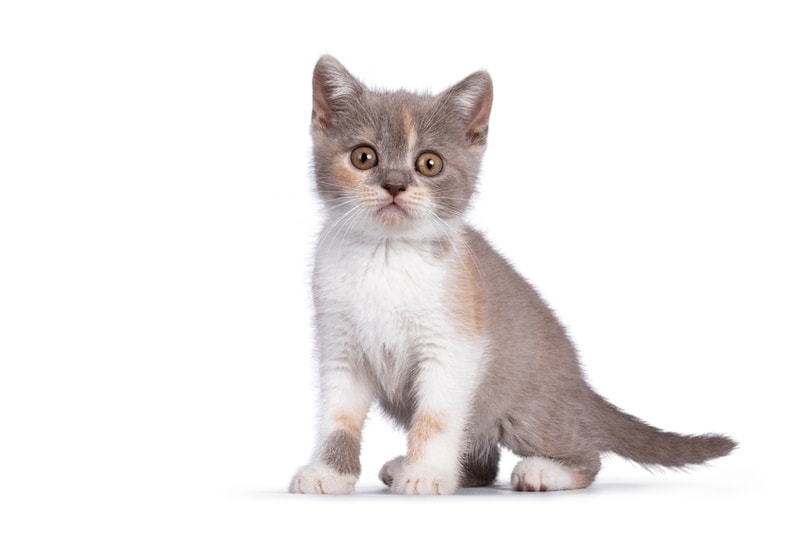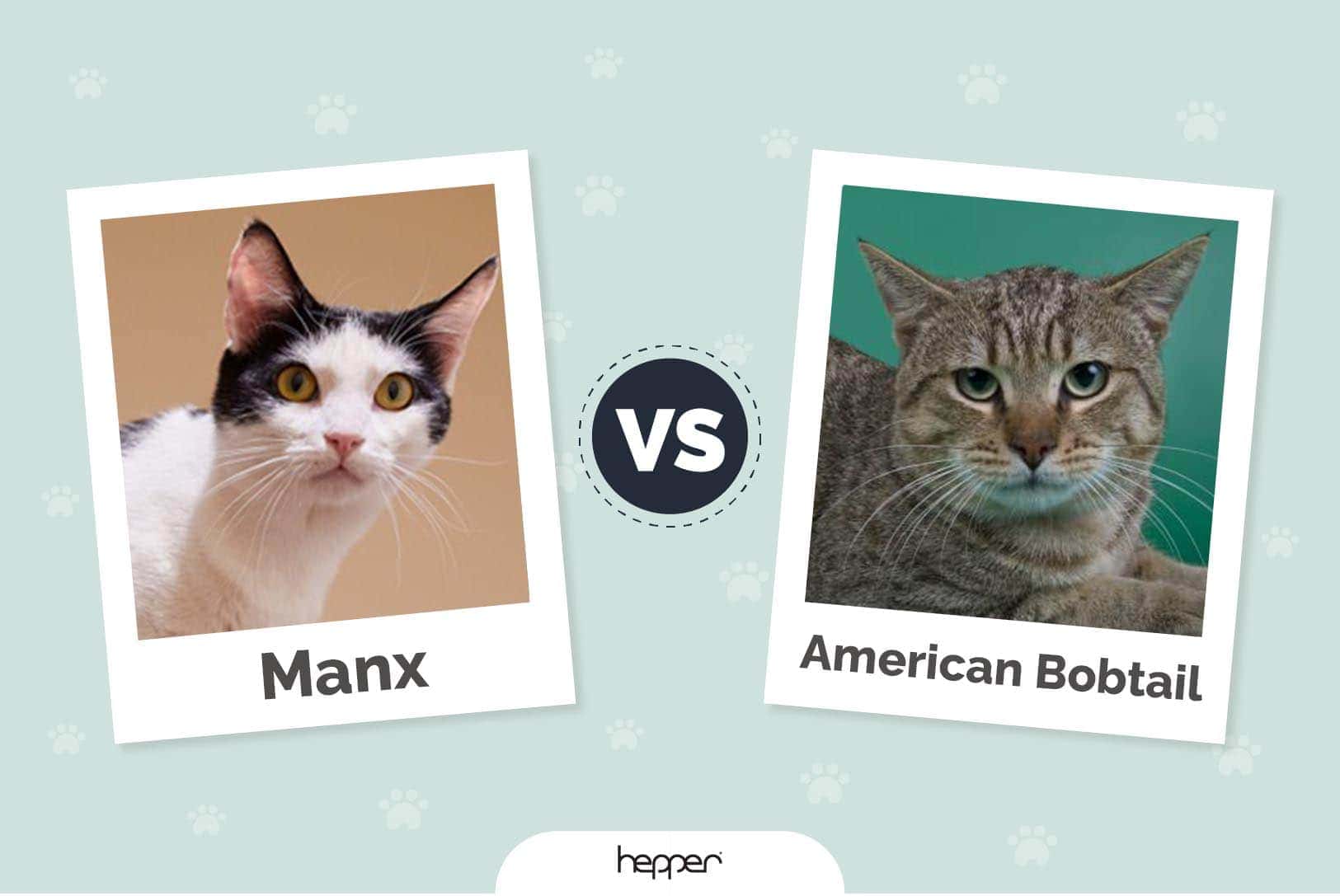Black Burmese Cat: Facts, Origin & History (With Pictures)
Updated on
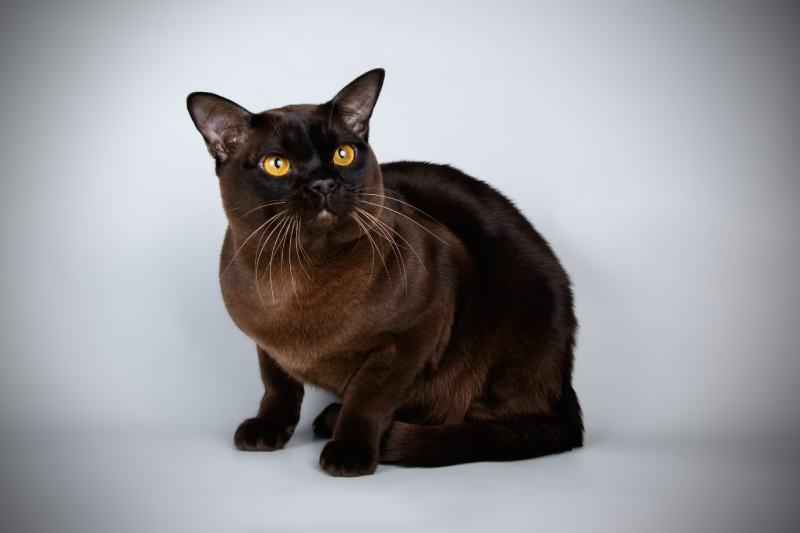
Click to Skip Ahead
| Height: | 8–12 inches |
| Weight: | 8–14 pounds |
| Lifespan: | 11–17 years |
| Colors: | Sable, blue, champagne, platinum, and variations of these |
| Patterns: | Solid, tortoiseshell |
| Suitable for: | Active families with large secure yards |
| Temperament: | Curious, intelligent, playful, talkative, affectionate |
A black Burmese is a treat to feast your eyes on, a true beauty. But these gorgeous felines are so much more than sleek good looks. They have a spunky character that contradictorily complements their svelte appearance. Despite their exotic beginnings, they are content and low-maintenance cats. Although they are relaxed kitties, they are by no means low-energy! The Burmese is an engaged, feisty, and super playful feline and an absolute joy to interact with.
You may be interested to discover that a truly black Burmese is extremely rare to find. In all likelihood, a Burmese that is thought to be black is actually a dark Sable color. This is due to a gene that the Burmese possess that dilutes color. The amount of pigment produced is reduced, resulting in paler versions of naturally dark colors. This is especially evident in kittens that are born darker, exhibiting a marked colorpoint effect, which fades as they mature.
Another interesting feature of the breed is the existence of two distinct standards. The modern Burmese is the standard with which we are more familiar. It is also known as the American Burmese and exhibits a slightly stockier build, broader forehead and more rounded eyes with a distinctly flattened muzzle.
In comparison, the European or British Burmese is a more slender cat with a characteristically more oriental appearance. Its head is wedge-shaped with a longer muzzle; it has almond-shaped eyes and large well-formed ears.
Black Burmese Cat Breed Characteristics
The Earliest Records of Black Burmese Cats in History
There are no specific references to black Burmese cats in early records of the breed. This is probably due to black not being a true Burmese color, but rather a variation of the sable coloration.
The first attempts to develop the Burmese in the late 1800s by Harrison Weir were unsuccessful. The result was what was known as a Chocolate Siamese, a breed which didn’t last very long.
The first official litter of Burmese kittens was born early in the 1930s to a crossbreed queen called Wong Mau. She was bred to a seal point Siamese tom called Tai Mau, after which she was bred to one of her sons from this first litter. The resulting litter of dark brown kittens represent the founding bloodlines of the Burmese cat breed.
Wong Mau had been imported into America by Dr. Joseph Thompson after he recognized she was distinctly different from a Siamese cat to the point of being a different breed. In fact, it was later accepted that she was probably one of the first known examples of the Tonkinese breed.
Across the ocean, in the UK there was renewed interest in the Burmese breed, following the failed attempt to develop it in the late 1800s. The British breeding program was composed of a greater variety of builds and types resulting in the aforementioned genetically distinct Burmese standard.
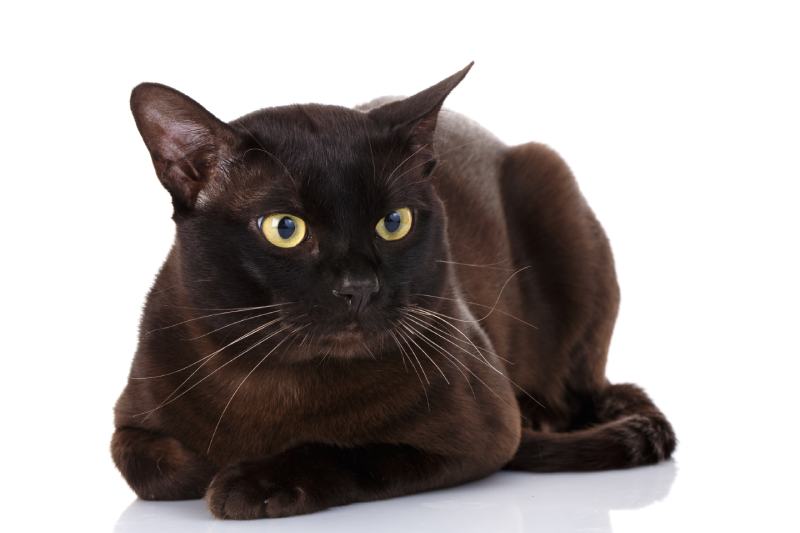
How Black Burmese Cats Gained Popularity
The initial introduction of the Burmese to the show circuit in the late 1930s caused much excitement with many folks wanting to get their hands on one. Their exotic good looks coupled with a curious and affectionate personality made them very appealing. Consequently, the demand for Burmese kittens increased rapidly.
They reached the peak of their popularity in the 1970s when they were only marginally less popular than the Siamese and Persian breeds. Considering that the breed was only developed 40 years earlier, it is remarkable (though not surprising) how quickly they became so adored.
Formal Recognition of Black Burmese Cats
The Burmese, including all of its color variations (black not among them), was formally recognized by the Cat Fanciers Association (CFA) in 1936. The breed enjoyed considerable success and popularity up until 1947, when registration was suspended due to excessive hybridization. After a three-generation pure pedigree was achieved, registration of the breed was once more resumed in 1957.
Black is not a formally recognized color for the Burmese by any of the feline governing bodies. For showing purposes the CFA, ACFA (American Cat Fanciers Association), TICA (The International Cat Association) and FIFe (Fédération Internationale Féline) all only recognize the colors listed above and variations thereof.
If you happen to get your hands on a pure black Burmese and have no intention of showing, then count yourself as lucky!
Top 5 Unique Facts About Black Burmese Cats
1. Their Golden or Yellow Eyes are a Trademark
A purebred Burmese will always have light-coloured, golden or yellow eyes. These are a trademark of the breed, which result from the same gene responsible for their diluted coat color.
2. They Are Affectionately Referred to as “Bricks Wrapped In Silk”
Burmese are deceptively heavy for their size. They appear to be small cats, but underneath that silky smooth coat is a densely boned powerhouse of muscle and sinew. They are renowned for being one of the heaviest breeds of cats relative to their size.
3. They are Chatterboxes!
If you are looking for a demure, quiet kitty that will blend quietly into the background, then a Burmese is not for you. Burmese are well-known to be extremely vocal. Their repertoire not only includes chatty meows but also crying and moaning sounds. This can become annoying if you are not prepared for the regular onslaught of utterances!
4. The American Burmese Lacks Genetic Diversity
It has been discovered that the American Burmese is one of the least genetically diverse cat breeds in the world. This is a dangerous condition, which results in a weakening of the breed. It is typified by smaller cats and litter sizes, less vigorous litters, problems with immune system function and general health issues.
To this end, the Burmese Breed Council now allows outcrossing with Tonkinese and Bombay cats to diversify the gene pool and strengthen the breed.
5. Burmese are Very Friendly and Trusting
They are known to approach strangers with as much warmth and affection as they would their own humans. This is a caution to Burmese fur parents. This aspect of their personality makes them attractive to pet thieves, as it makes them an easy target. Always ensure that your precious Burmese is safe at all times.
Does a Black Burmese Cat Make a Good Pet?
A black Burmese makes the most wonderful pet and companion! These kitties are attentive, affectionate, and engaging—not your typical aloof feline. Burmese kittens are particularly energetic and playful, but their curiosity might take on a more observational role as they mature. Due to their exuberance, they are best suited to homes with large, secure outdoor spaces for them to explore and enjoy.
They adore being petted and cuddled, and this kind of attention needs to be incorporated into their daily care routine. You can expect them to express their delight audibly.
Their short, silky-smooth coats are low-maintenance and they can get away with once-weekly brushing. As a bonus, you won’t be sweeping up copious quantities of kitty hair off the furniture and floors!
These sturdy kitties are prone to obesity if they don’t get enough exercise, so attention needs to be paid to their diet. As with most purebred cats, they are genetically predisposed to a few health conditions. These are easily avoided or managed with careful care and regular veterinary check-ups.
Conclusion
It doesn’t matter whether the Burmese is truly black or officially sable in color. One thing is for sure—the black Burmese is a gorgeous kitty with oodles of character. Its fascinating origins and somewhat controversial beginnings only enhance its allure.
If you’ve met or owned a Burmese you will know what a special addition to the family they are. If you’re considering getting a new kitty and a Burmese is on the list of possibilities, you certainly can’t go wrong.
Featured Image Credit: Oleksandr Volchanskyi, Shutterstock


